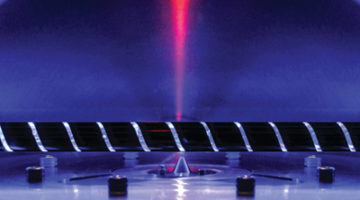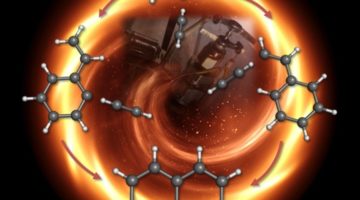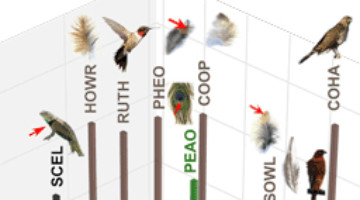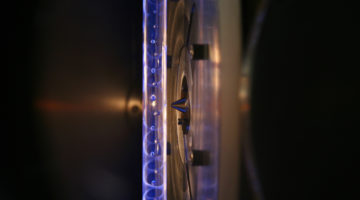For the first time, researchers directly observed QOOH molecules, a class of highly reactive molecules at the center of the web of ignition chemistry reactions. The data generated will improve the fidelity of combustion models used to create cleaner and more efficient cars and trucks. Read more »![]()
![]()
ALS Work Using Mass Spectrometry
Mass spectrometry is an experimental technique used for identifying molecules. Neutral molecules are ionized, and the charged species are sorted by magnetic and/or electric fields according to mass. A mass spectrum is a plot of the ion signal intensity as a function of mass-to-charge ratio (m/z). The atoms or molecules in a sample can be identified by correlating the mass spectrum with known molecular masses or characteristic fragmentation patterns.
ALS Evidence Confirms Combustion Theory
Researchers recently uncovered the first step in the process that transforms gas-phase molecules into solid particles like soot and other carbon-based compounds. It’s a discovery that could help combustion chemists make more efficient, less polluting fuels and help materials scientists fine-tune their carbon nanotubes and graphene sheets for faster, smaller electronics. Read more »![]()
![]()
For the Birds: The Magic of Color in Feathers
The beauty and wild colors of bird feathers are derived from the combinations of relatively few molecules. Research at the ALS shows that the expression of colors (or melanin), depends on the proportion of the molecules.
Read more »
Direct Kinetic Measurements of a Criegee Intermediate
“Criegee intermediates” are elusive molecules that play a pivotal role in atmospheric chemistry and are also byproducts of key combustion reactions. At the Chemical Dynamics Beamline, the reaction rates of one form of Criegee intermediate was directly measured for the first time, with some surprising results. Read more »![]()
![]()



